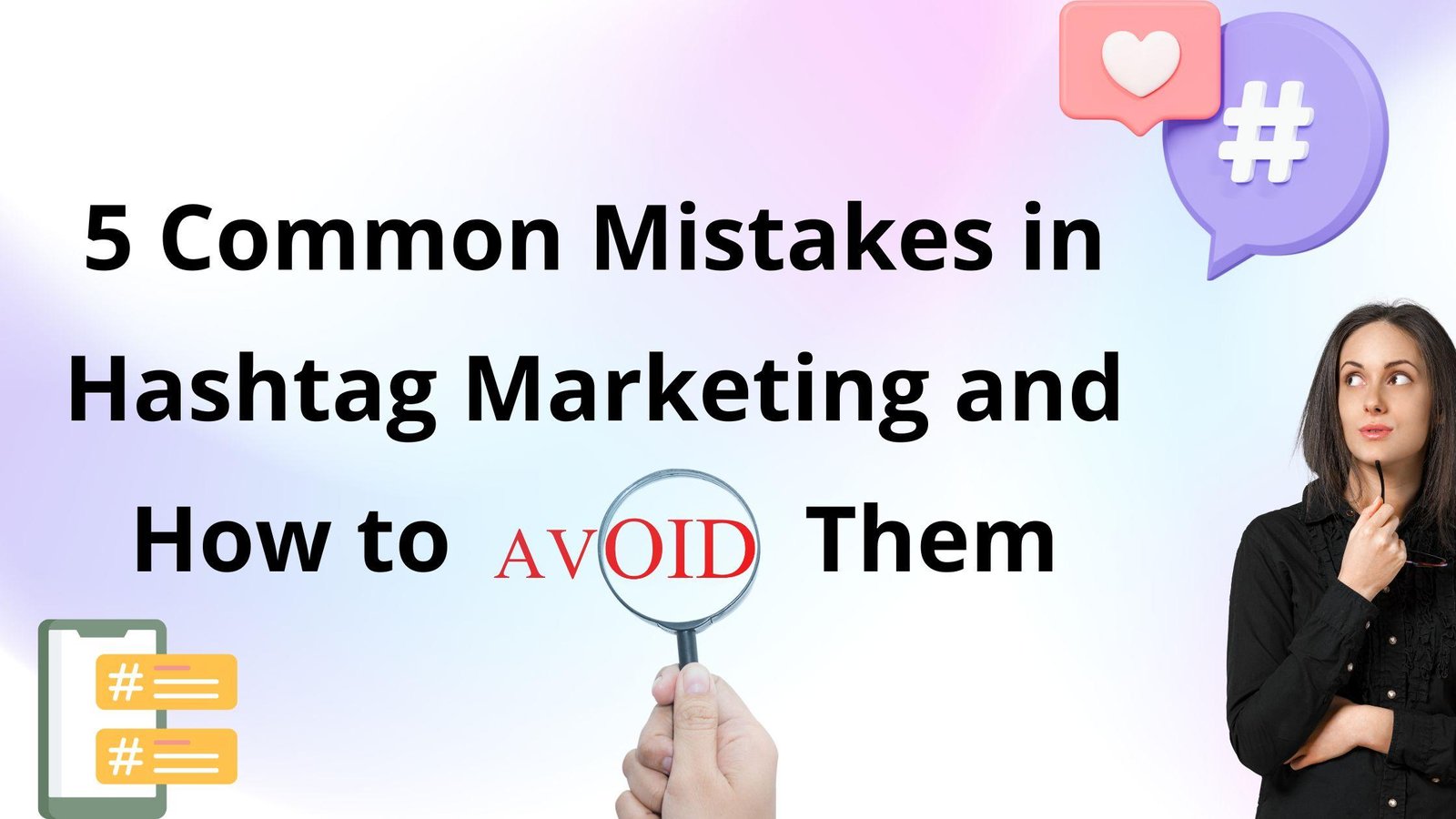
 Vishesh
VisheshHashtag marketing represents a potent instrument to enhance brand visibility, foster engagement, and establish connections with your intended audience on social media platforms. Nevertheless, it is susceptible to common mistakes that can impede your endeavours and diminish the efficacy of your campaigns. This article aims to delineate five prevalent errors in hashtag marketing and offer guidance on mitigation strategies to optimize your impact.
Want your Hashtag Viral?
One of the most common mistakes brands make is using hashtags that are either irrelevant to their content or too generic. While popular hashtags might seem like a good idea, they can cause your content to get lost in a sea of posts, making it difficult to stand out.
How to Avoid It:
- Research Relevant Hashtags: Use tools like Hashtagify or RiteTag to find hashtags that are specific to your niche and have a strong following. Focus on hashtags that are relevant to your content and resonate with your target audience.
- Balance Popularity and Specificity: While it’s okay to use a few popular hashtags, also include niche or branded hashtags that are less crowded. This increases the chances of your content being discovered by a more targeted audience.
Failing to create and promote a branded hashtag is a missed opportunity for building brand identity and fostering community engagement. A strong branded hashtag can serve as a rallying point for your audience and encourage user-generated content.
How to Avoid It:
- Create a Memorable Branded Hashtag: Develop a unique and memorable hashtag that represents your brand or a specific campaign. Ensure it’s easy to spell and not too long.
- Promote Your Hashtag: Encourage your audience to use your branded hashtag by featuring it prominently in your posts, bio, and marketing materials. Consider running a contest or campaign that incentivizes followers to use the hashtag.
While it might be tempting to load up your posts with as many hashtags as possible, this can be counterproductive. Overloading your content with hashtags can make your posts look spammy and reduce engagement.
How to Avoid It:
- Use a Strategic Number of Hashtags: Stick to a moderate number of hashtags—around 5 to 10 for most platforms. This allows you to reach a wider audience without overwhelming your content.
- Prioritize Quality Over Quantity: Focus on using hashtags that are highly relevant to your content and audience. A few well-chosen hashtags can be more effective than a large number of irrelevant ones.
Many brands fail to track the performance of their hashtags, missing out on valuable insights that could improve future campaigns. Without data, it’s difficult to know which hashtags are driving engagement and which ones are falling flat.
How to Avoid It:
- Monitor Hashtag Performance: Use analytics tools like Instagram Insights, Twitter Analytics, or third-party platforms to track the performance of your hashtags. Pay attention to metrics like reach, engagement, and follower growth.
- Adjust Your Strategy Based on Data**: Regularly review your hashtag analytics and adjust your strategy based on what’s working. If certain hashtags are underperforming, replace them with new ones or focus on those that are driving results.
Not all social media platforms treat hashtags the same way. What works on Instagram might not be effective on Twitter or LinkedIn. A one-size-fits-all approach can limit the effectiveness of your hashtag marketing efforts.
How to Avoid It:
- Customize Your Hashtag Strategy for Each Platform**: Understand how hashtags work on each platform and tailor your strategy accordingly. For example:
- Instagram: Use a mix of popular, niche, and branded hashtags in your posts and stories.
- Twitter: Limit hashtags to one or two per tweet to keep your message concise.
- LinkedIn Use industry-specific hashtags to reach a professional audience.
- Stay Updated on Platform Changes: Social media platforms frequently update their algorithms and best practices. Stay informed about changes that could affect how hashtags are used and adjust your strategy as needed.
Hashtag marketing can be a game-changer for your social media strategy, but it’s important to avoid common pitfalls that can undermine your efforts. By using relevant hashtags, creating a strong branded hashtag, avoiding overloading your posts, monitoring analytics, and adapting to platform-specific best practices, you can enhance your hashtag marketing campaigns and achieve greater success. Stay strategic, be mindful of your audience, and let your hashtags work for you in driving engagement and building your brand.
Disclaimer*: “The content and promotion prices shown on this website are based on our own analysis and suggestion, generated through Find Influencer’s (FI) in-built calculator using public metrics (followers, engagement, category). These are indicative values for informational purposes only and are not official rates. Actual fees may vary in real collaborations. Find Influencer has no direct affiliation or endorsement with the influencers mentioned unless stated otherwise. Please confirm directly with the influencer or their agency before making any business decision. If you are the influencer featured here and wish to update or change your displayed price, you can contact us at info@findinfluencer.in or call at 8218235970. We will promptly verify and make the necessary corrections.”

FindInfluencer.in is an influencer marketplace where influencers can connect directly with businesses to secure sponsorships. Additionally, we prioritize our services and maintain transparency, ensuring that customers who hire influencers can have peace of mind about their work and money. We are always committed to staying connected with our clients.
Copyright 2025 © VINI TECH All Rights Reserved
FindInfluencer.in is an influencer marketplace where influencers can connect directly with businesses to secure sponsorships. Additionally, we prioritize our services and maintain transparency, ensuring that customers who hire influencers can have peace of mind about their work and money. We are always committed to staying connected with our clients.